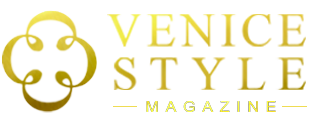Till 30.11.2015
Curated by Caroline Bourgeois in collaboration with the artist
This major show dedicated to Raysse, one of the most important living French painters and winner of the 2014 Praemium Imperiale, takes over the atrium and both floors of Palazzo Grassi. It is the first monographic exhibition dedicated to the artist outside of France since 1965 and is the perfect opportunity to discover or rediscover France’s hidden master and to explore the dedication and proximity between a collector and an artist.
Curated by Caroline Bourgeois in close collaboration with the artist, the exhibition brings together more than 300 works from 1958 to the present day – paintings, sculptures, videos and neon works – almost half of which have never been shown to the public (some are works in progress to be displayed for the first time at Palazzo Grassi). The course of the exhibition, which is non-chronological, offers a new point of view on the work of Martial Raysse by underlining, on the one hand, the multifaceted nature of his artistic production, and, on the other hand, the continuous dialogue and echo he has established among his works throughout his sixty years of career.The painter emerged at the same time as major post-war American artists such as Warhol and Liechtenstein and he worked in Nice, Paris, New York and Los Angeles. Although one of the major artists of the second half of the 20th century, Raysse has only recently gained the same reputation as some of his more well-known ‘Pop Art’ contemporaries.
Born in 1936, Martial Raysse studied literature before turning to painting in 1955. He is one of the founding members of the New Realism, the artistic movement founded in 1960 by art critic Pierre Restany alongside Armand, François Dufrêne, Raymond Hains, Daniel Spoerri, Jean Tinguely, Jacques Villeglé, and Yves Klein. In opposition to the New Realists, Martial Raysse was interested in new objects, attractive and beautiful things that represented the consumerist society he was living in. He made his first assemblage in 1959 and became an active member of the European avant-garde. In 1961, at the age of twenty-five, he participated in the “Art of Assemblage” exhibition at MoMA next to Duchamp, Spoerri, Schwitters, Beuys, Bruce Conner and Robert Rauschenberg. In 1962, He made Raysse Beach for the experimental exhibition “Dylaby” (Dynamisch Labyrint), organized at the Stedelijk Museum in Amsterdam. This installation designed as a sand beach with inflatable pool and Juke Box introduced the use of neon which became an important material for Raysse.
Photo Credits:
1.)
Martial Raysse, Un théâtre ad vitam, 2009
Courtesy kamel mennour, Paris
Installation view at Palazzo Grassi 2015
Ph : © Fulvio Orsenigo
© Martial Raysse by SIAE 2015
2.)
Martial Raysse
Te voilà, cruelle, 2011, Private collection, Paris
Cerise, 2011, Collection Martial Raysse
Songeuse Roxane, 2013, Private collection
Installation view at Palazzo Grassi 2015
Ph : © Fulvio Orsenigo
© Martial Raysse by SIAE 2015
3.)
Martial Raysse
Installation view at Palazzo Grassi 2015
Ph : © Fulvio Orsenigo
© Martial Raysse by SIAE 2015
4.)
Martial Raysse
Installation view at Palazzo Grassi 2015
Ph : © Fulvio Orsenigo
© Martial Raysse by SIAE 2015
5.)
Martial Raysse, Ici Plage, comme ici-bas, 2012
Pinault Collection
Installation view at Palazzo Grassi 2015
Ph : © Fulvio Orsenigo
© Martial Raysse by SIAE 2015
Foto di copertina:
Palazzo Grassi
PG_1
© Matteo De Fina















No Comment